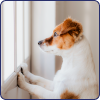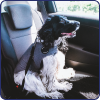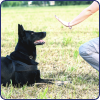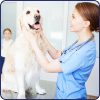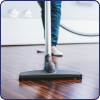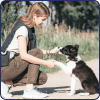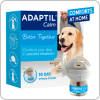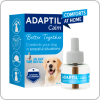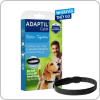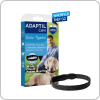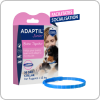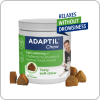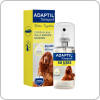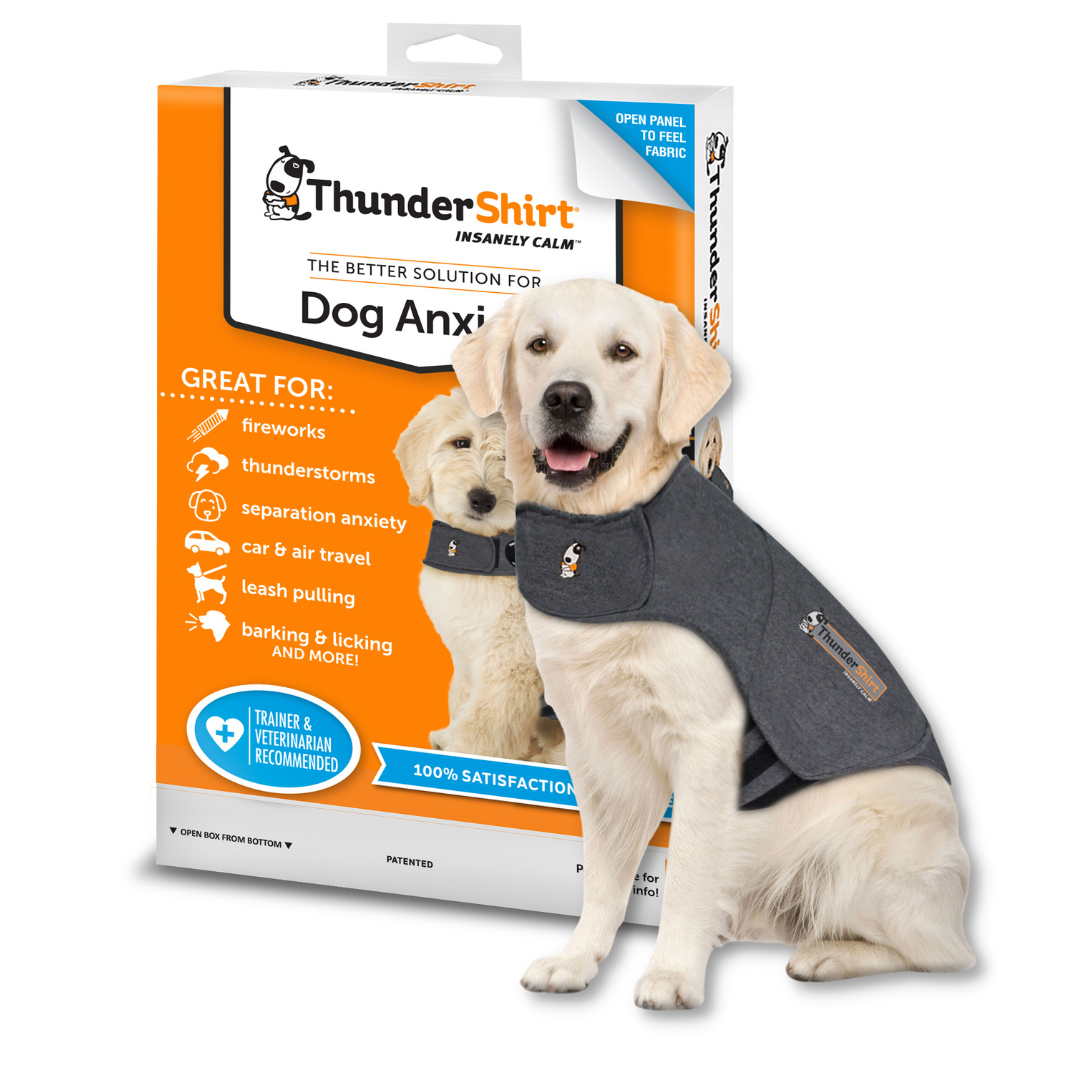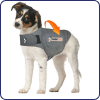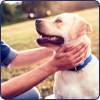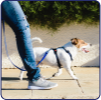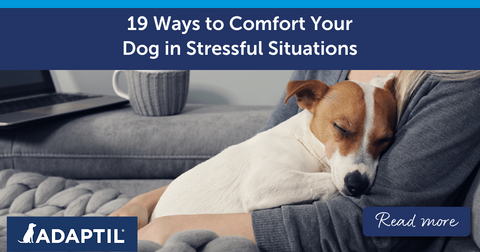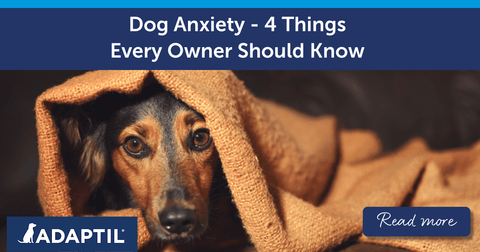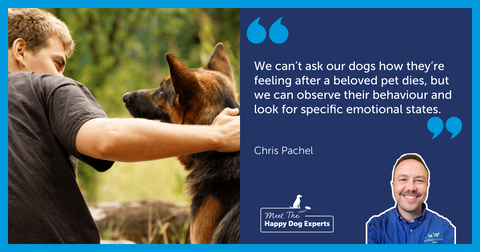Want to subscribe to our blog?

Training Tips to Help Your Dog With Separation Anxiety
Written by ADAPTIL Expert, published on April 18, 2023
There has been a surge in the purchase and adoption of dogs during lockdown! And although a new dog will be a welcome addition to the family, it is important to make sure your pooch is trained to handle all situations in your home to help them stay calm, happy and in control!
Helping your dog stay confident is particularly important if you know they will need to adjust to any changes, such as you leaving the house more frequently, or not being at home all the time.
Dogs are very sociable animals and love the company of humans, old and young - but have you prepared them for the fact that, sometimes, they will have to be on their own for a while? Do you know how long can you leave a dog home alone?
If you have not included 'alone time' in your pet's training program, now is the time to help your pooch, and prevent any signs of separation anxiety.
How to Help Your Dog Adjust to Being Home Alone
Recognise separation anxiety signs
From your dog's point of view, they may well be confused if you've been at home for a long time, but are now leaving them alone. So how can you tell if your pet is experiencing separation anxiety? Have you noticed that they are being more destructive than normal? If they are howling, barking or scratching at a door this could be separation-related distress; and when you are out of sight, they may even be trembling, drooling or pacing around and even toileting indoors.
Of course, it can be difficult to know what your dog is doing when you are not there (other than seeing physical signs when you return) so if you suspect they are getting distressed when they are alone, consider setting up a 'doggy cam' so that you can monitor their behaviour. Or you might be able to keep an eye on them through a window to see how they are getting on. If you think your dog may have been distressed while you were away, it may also be worth checking with your neighbours. They may have heard barking!
Training tips to help your dog with separation anxiety
- Positive training from an early age is important for your puppy's development and this should include teaching them that it's OK for them to be on their own.
- Get them used to the room or area you will be leaving them in - typically this is the area that they spend the most time in during the day - so that they know that this is their safe space. Make sure they have a comfy bed and have their water bowl and favourite toys around them.
- Gradually introduce some alone time for your pet when you are still around. Try leaving them alone in a room regularly - but at different times of day - and for short periods to start with. Ensure they have plenty of space to wander around, their water bowl is full and perhaps some treats hidden away for them to find and that they've got their favourite toys to play with.
- Using stair gates between their space and yours will help them realise they don't have access to your company all of the time. This way, you will be able to keep an eye on them and they will learn to enjoy their own company for a while. Make sure they have toys that they can chew, but don't be tempted to interact with them. Keep time alone short to start with - you want to help your dog learn to stay calm and relaxed when you return. As your dog adjusts, try gradually increasing the time you spend away - don't be tempted to increase it too quickly!
- Do a few dummy runs! Get your dog used to you picking up your keys, putting on your coat and moving out of sight - as if you are leaving the house. Do this for short durations initially. Then, once your dog is more comfortable, try leaving the house - again starting with very short durations and building on them as your dog adapts.
- Always progress separation training at the pace your dog is most comfortable with. If a certain part of the routine (such as you putting on your coat) causes particular stress, adapt the training to help them cope - try spending time with them while wearing the coat, or reducing the time you are away until you know they are adapting well.
Other tips to support your dog
- Make sure they have plenty of exercise before you leave. If they are tired after a long walk, they will be more likely to relax.
- Using ADAPTIL Calm in the room where they spend their time will also help them relax and feel less anxious. ADAPTIL creates a reassuring environment at home and continuous use provides constant comfort for your dog.
- Leave the radio or TV on when you are out - this will help them feel as if they are not alone if they hear voices and sounds they are used to hearing while you are around. Music has been shown to have a calming effect on dogs - particularly classical music or even reggae and soft rock!
- Try not to leave your dog alone for longer periods of time than you have trained them for. If you do need to be away for longer, consider having a pet sitter or neighbour (that your dog already knows!) check in to let your dog into the garden, or even take them for a short walk. Professional dog walkers can also provide a good service for busy people who cannot get home during the day - but always get recommendations from other people to ensure they are right for your pooch. It's important to introduce your pooch to your neighbour or dog walker a few times before you leave them alone - this way they will not react adversely to strangers entering your home.
- Don't make a fuss of your pooch before you leave or return home but make your departure a 'normal' act that they will accept and that being on their own is not unusual.
- If you have been at home for a while, perhaps school holidays or even lockdown, remember to reintroduce your pooch gradually to being home alone when you return to work. They will have gotten used to you being around all day, and might show signs of separation anxiety when things change again.
If you continue to struggle to allay your dog's fears of being left alone, get advice from your vet or a qualified behaviourist; there can be many reasons why your dog is anxious and your vet can check them out for any underlying medical conditions you may not be aware of and treat them accordingly.
Following our expert tips will help to ensure your bond with your dog goes from strength to strength.
Make sure to join our community for weekly advice from our dog behaviour experts as well as product offers and competitions.
 Related Posts
Related Posts
Legal notice The information collected is intended for Ceva Santé Animale and the group in order to manage your requests. This information can be shared with service providers in order to organize their management. In accordance with the General Data Protection Regulations, you have the right to access, rectify and limit the processing of your data. You can also, in certain cases, object to the processing, withdraw your consent and request the deletion and portability of your data. For any request in relation to your personal data, please visit this page.

